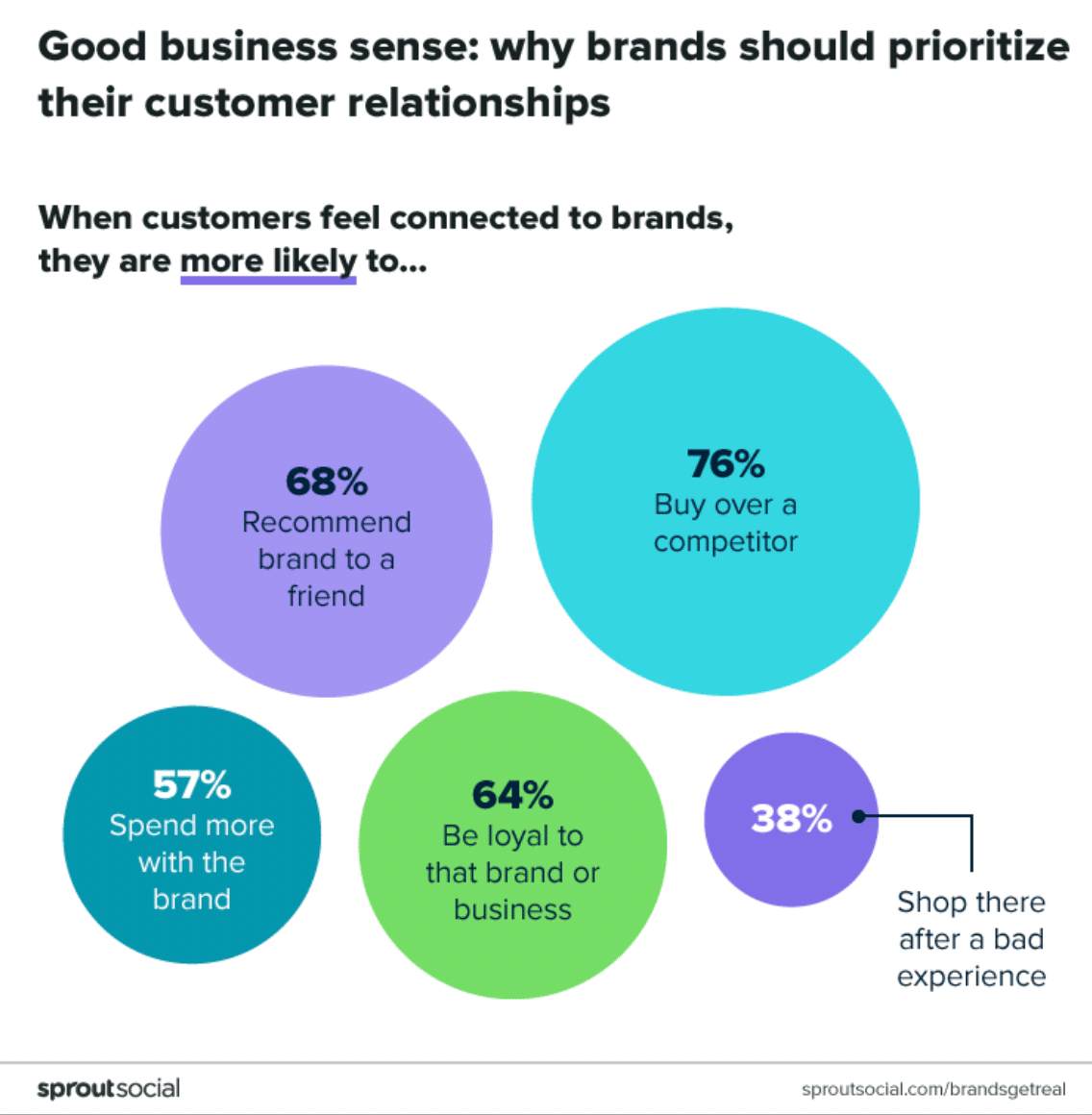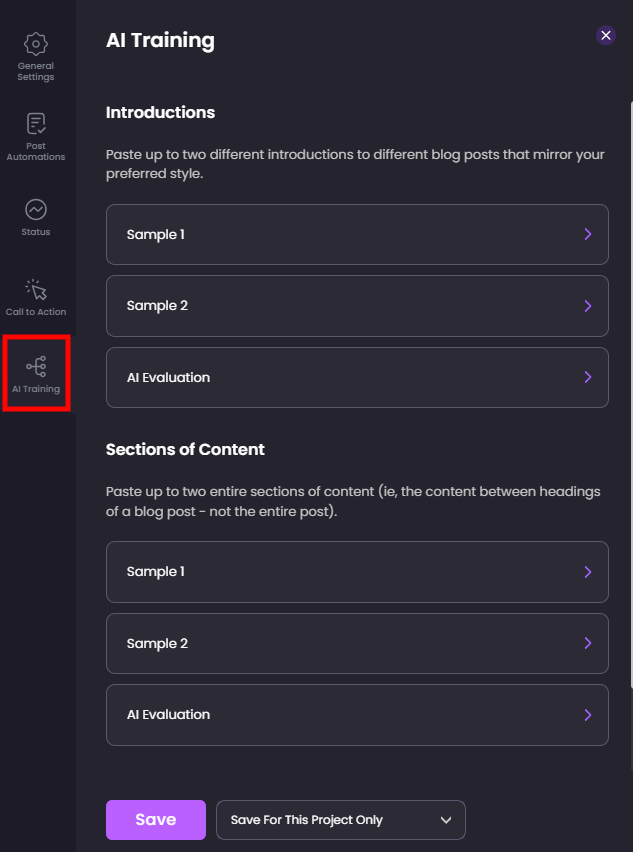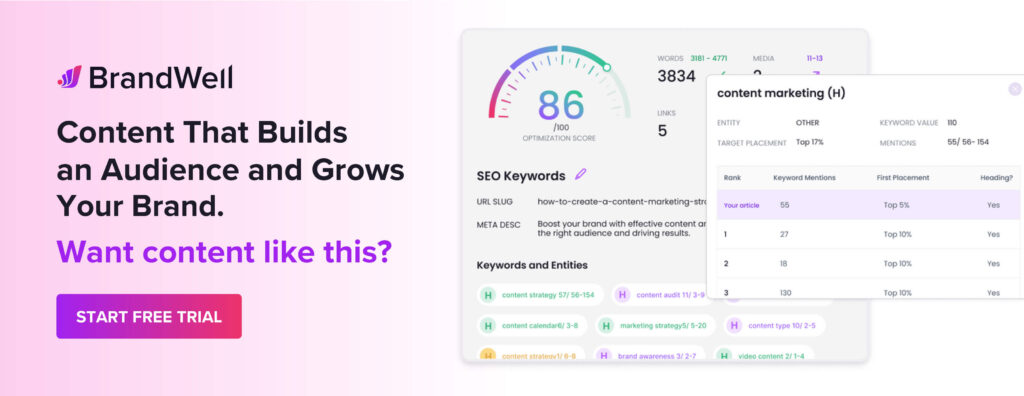Discover top guides, trends, tips and expertise from AIO Writers
How to Create a Brand Style Guide: 11 Essential Questions to Ask Yourself
Julia McCoy
Tuesday, 19th Jul 2022
Ever wondered how some brands create such a cohesive and recognizable look across all their content and marketing materials?
It’s not by accident.
It’s by using a handy dandy brand style guide.
A brand style guide is a document that details how your brand should be represented across all content and communication platforms.
Companies with consistent brand activities experience a 33% increase in revenue and a 20% increase in the value of content produced.
Not having a brand style guide could be costing you sales!
Ready to create one but not sure where to start? This blog post will teach you everything you need to create a brand style guide for your business.
Let’s get started!
Table of Contents
Why Is Creating a Brand Style Guide Important to Your Business?
The Elements of a Brand Style Guide
11 Questions Worth Asking Yourself When Building a Brand Style Guide
- Who Are You as a Business?
- How Do You Help Your Clients?
- What Is Your Process as a Business?
- What Makes You Unique?
- Who Is Your Ideal Client?
- What Is Your Preferred Tone of Voice?
- How Do You Want Your Brand Name to Appear?
- What Sources Should Your Team Use?
- How Do You Want Your Logo to Appear?
- What Are Your Main Fonts?
- What’s Your Color Palette?
Creating a Brand Style Guide That Fuels Your Vision & Content Forward
Why Is Creating a Brand Style Guide Important to Your Business?
People make snap judgments all the time, and usually, those judgments are based on appearance.
81% of consumers will buy from a brand they trust, yet six in ten people say their default tendency is to distrust something until they see evidence it’s trustworthy.
You can’t build trust if your content is not cohesive with your brand.
That’s why it’s essential to have a strong brand that reflects who you are and what you do. And a big part of that is having a brand style guide.
A clear and concise guide allows your content to remain consistent no matter who creates it. This is important to maintain a strong brand identity.
Think of it as the rule book for how your company communicates with the world. Following these guidelines ensures that everyone is on the same page — no pun intended.


Source: HubSpot
Need content help? Check out our incredible brand growth platform BrandWell and create amazing content (just like this blog!) on autopilot — every day for the rest of your business’ life!
The Elements of a Brand Style Guide
A brand style guide is only as successful as the key information it contains. To create a truly effective guide, you’ll need to be as detailed as possible.
Here are some essential elements to include:
1. Mission Statement
A mission statement is like a North Star for your content strategy. It gives you a clear destination to aim for and helps keep you on track when things get tough.
Without a mission statement, it’s too easy to get lost in the sea of content and end up drifting aimlessly.
But with a mission statement, you always have a clear idea of what you’re trying to achieve with your content. Not only that, but a good mission statement will inspire your audience and make them want to come along on your journey with you.


2. Target Audience
Your team should be clear on who your target audience is before crafting any content.
This section of your brand style guidelines provides details on the buyer persona of your ideal client, which ensures each piece of content is created with them in mind.
By understanding your target audience, your team can better engage them with content that resonates.
Additionally, this clarity will help to focus your team’s efforts, preventing the creation of content that doesn’t align with your goals.
3. Description of Your Visual Identity
A description of your visual identity will include precise details to ensure all visual aspects, such as the logo, website, advertisements, and social media designs, are on par with your brand.
Your visual identity sets you apart from competitors and helps you build a recognizable business.
4. Editorial Guidelines
Editorial guidelines will help ensure that your content is on-brand, engaging, and accurate. You will want to include all the guiding points for any published content, such as videos, blog posts, courses, and social media posts.
In this section, you should indicate what is acceptable and unacceptable content.
11 Questions Worth Asking Yourself When Building a Brand Style Guide
A brand style guide is a road map for your brand. It keeps everything consistent and cohesive. And, when done right, it can be a huge time-saver. So, how do you create a brand style guide?
Well, first, you need to ask yourself some questions.
1. Who Are You as a Business?
This is an important question to answer, as it will help to shape the direction of your content creation.
Are you a traditional company or a disruptor? Are you serious or lighthearted? What are your core values? How did you get to where you are today?
Once you understand who you are as a business, you can start to craft content that reflects your brand identity.
2. How Do You Help Your Clients?
What is your product, and how do you deliver this to your client? Do you offer a single product or a wide range of services for your customers?
You don’t have to detail every product here, but you want to ensure there is a clear understanding of each service your company offers.
3. What Is Your Process as a Business?
Whether you provide an online course or one-on-one coaching, you’ll want to be specific about how you work with your clients.
Key questions to ask yourself:
- How do clients begin working with you?
- What is the communication process between you and your clients?
- What will clients receive when working with you?
4. What Makes You Unique?
How do you stand out against your competitors?
In a world of ever-increasing competition, knowing how to stand out from the crowd can be difficult. However, the key to success is often simply understanding what makes you unique.
88% of consumers say authenticity is important when deciding what brands to support.
Whether it’s a skill, a quality, or just a different way of thinking, every person has something that they can offer that’s special and valuable.
Once you’ve identified your unique selling point, it’s crucial to convey this to your team to market it effectively.
5. Who Is Your Ideal Client?
It’s time to get specific. Describe the age, gender, nationality, income level, job title, and characteristics of your ideal customer.
First and foremost, you’ll want to have conducted thorough research so you can understand who your audience is.
The next step is creating a buyer persona or audience persona. This is an extremely helpful marketing tool that will outline the fictional character of your ideal client.
Helpful questions to ask yourself when you’re defining this:
- What kinds of things are they interested in?
- What is their professional level?
- What are their pain points?
Go the extra step and link to a social media profile so your team has a clear vision of your buyer persona.
6. What Is Your Preferred Tone of Voice?
If you could describe your business as a movie character, who would it be? Are you smart and quick-witted like Mr. Darcy from Pride and Prejudice or a confident and scheming Ferris Bueller?
The way you communicate with your customers says a lot about what kind of company you are.
Are you friendly and approachable or serious and professional? Do you want to be seen as bold and savvy or empathetic and reliable?
The tone of voice you choose should reflect the kind of business you are and the image you want to project.
If you’re using BrandWell to create your content, you can choose the tone of voice that applies to your business. Among the options are:
- Academic
- Authoritative
- Bold
- Casual
- Dramatic
- Excited
- Feminine
- Grumpy
- Happy
- Informative
- Joking
- Masculine
- Persuasive
- Professional
- Sarcastic
- Witty
Still struggling to find your perfect tone? Train the AI to write in your voice!
Go to your Project Settings, click the “AI Training” tab, and upload up to four examples of your previous work. BrandWell will “learn” your tone and writing style and generate future blog posts based on this data.


7. How Do You Want Your Brand Name to Appear?
As any business owner knows, your company name is your identity.
It’s how your clients and audience recognize you and how they will remember you. That’s why it’s so important to be clear on how you want your name to appear.
Are you ok with using abbreviations? If so, when?
It’s also important to consider how your name will appear in different mediums — online, in print, and on social media.
8. What Sources Should Your Team Use?
Generally, having a solid list of reputable sources at your fingertips is always good. After all, your credibility as an author is only as strong as the validity of your sources.
When it comes to creating content, this rule holds especially true. Whether you’re writing an article, crafting a blog post, or recording a podcast, you want to ensure that the information you share is accurate and up to date.
You and your team must use trustworthy sources that don’t compete with your business.
Having a clear list of these sources in your brand style guide will ensure your team is on the same page when it comes to sourcing.
9. How Do You Want Your Logo to Appear?
Your logo represents your company, so your logo must be always clear and legible.
Give clear instructions to anyone responsible for using your logo.
Make sure your team knows what colors to use, what type of content it should be included, and if there are any restrictions on how your content creation team can alter it.
If you have more than one logo variation, explain when and where your team should use each one. By taking these steps, you’ll ensure your logo always makes a positive impression.
10. What Are Your Main Fonts?
Ever stumble upon a piece of marketing or website where you can barely read the text? Yikes!
Your main fonts say a lot about your brand.
They should be easy to read and convey the right message.
Knowing when to use each font is essential to ensuring your brand comes across as professional and polished.
This section of your brand style guidelines should detail what fonts to use and when.
Additional questions to ask yourself:
- What is your brand’s body text font?
- What are your brand’s heading and subheading fonts?
- What is the ideal spacing of your text?
The key is to find a balance that makes your text easy on the eyes. You can create a typographic style that reflects your brand with care and attention.
11. What’s Your Color Palette?
When it comes to branding, one of the most important elements is your color palette.
You’ll use these colors across all of your visual content, from your website and logo to your ads and business cards.
Your color palette should include a color swatch, the name of the color, the RGB or HEX number (for digital designs), and the CMYK (for print). This will ensure consistency across all mediums.
Now that your creative juices are flowing, you’re ready to make your very own brand style guide.
Creating a Brand Style Guide That Fuels Your Vision & Content Forward
If you’re just starting to work on your brand style guide, you may be in the beginning stages of your business venture.
But as any entrepreneur knows, starting a business is more than just designing a logo and picking out a color scheme — it’s about building a whole strategy and foundation for your company.

UNLOCK YOUR POTENTIAL
Long Headline that highlights Value Proposition of Lead Magnet
Grab a front row seat to our video masterclasses, interviews, case studies, tutorials, and guides.



